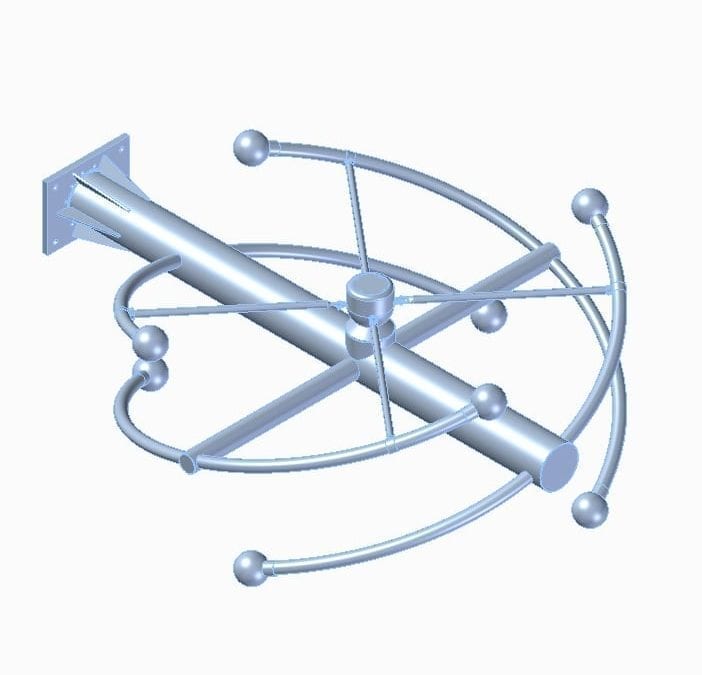NextGen TV-ready antenna reduces footprint, expands configuration options for low-band VHF
Dielectric breaks through existing size and weight constraints of low-band VHF antennas with the debut of its new DCR-Q Series at the 2020 NAB Show. The DCR-Q Series reduces the space normally required on a tower to support a traditional, low frequency panel or super turnstile channel 2 – 6 antenna, with its economical, versatile and space-saving design.
The DCR-Q design was adapted from the existing Dielectric DCR Series FM antenna family, with the goal of producing a more affordable and space efficient low-band VHF solution – a solution needed by broadcasters moving from a UHF to VHF channel during the TV repack. Some UHF broadcasters simply didn’t have the tower space available to support a traditional, large low-band VHF antenna and its associated weight and wind load.
One characteristic of antenna design is that lower frequencies require larger antennas, and low-band VHF TV (channels 2 – 6) antennas are typically the largest of all. The required metal and associated interconnections also add to the cost of the antenna. In some situations, a low-band VHF antenna is too large to use on an existing tower.
The DCR-Q resolves these limitations through a lighter, smaller form factor that can be side-mounted or top-mounted on towers, including structures once deemed inadequate to support low-band VHF systems. Additionally, the adaptation of the DCR Series ring-style design offers excellent circularity. VHF signals generally experience lower building penetration, and adding circular polarization with the DCR-Q improves indoor reception.
Engineering Innovation
Dielectric developed the DCR-Q concept in response to a requirement by Los Angeles broadcaster, KWHY-DT, which voluntarily moved from UHF to VHF Channel 4 as a result of the television repack.
“KWHY’s plight inspired our engineering department to design and build the low-band DCR-Q VHF antenna,” said Steven Moreen, Dielectric’s Western Regional Sales Manager. “The DCR-Q addresses VHF broadcaster requirements for broadband, high-power handling and circular polarity, in a lighter compact array with support for NextGen TV. We are now productizing the DCR-Q to serve a broader VHF customer base in the United States and international regions where low-band VHF television antennas are in demand.”
The DCR-Q antenna array is comprised of eight ring-style radiating elements. Each radiating element consists of large truncated helical elements, which provide a truly circular polarized signal. While the design borrows key elements from the DCR FM Series, the DCR-Q array is somewhat larger than its FM cousin to meet the low frequency channel requirements.
The DCR-Q is available in a two-bay configuration for low-powered VHF TV stations, and four or eight-bay configurations for medium-powered stations. While normally configured as an omni-directional antenna, the bottom half of a four- or eight-bay antenna array can be offset from the upper half, creating a directional signal. This flexibility helped KWHY achieve the optimal directional pattern required to deliver their signal effectively across their Los Angeles service area.

